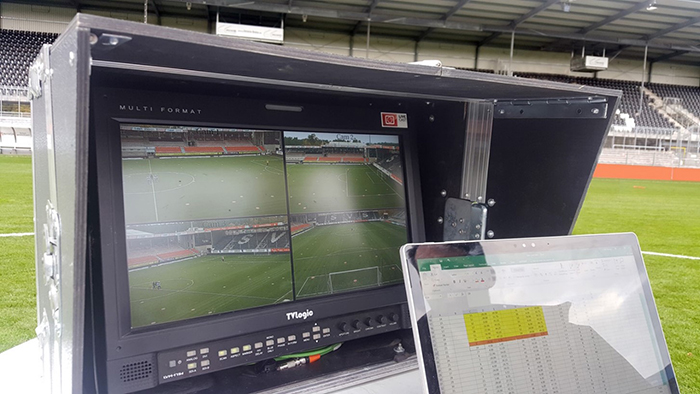In 2016, the International Football Association Board (IFAB) approved the use of Video Assistant Referee (VAR) technology in a two-year period of ‘live experiments with video assistance for match-changing situations’.
The purpose of this was to determine whether the use of VAR improved the game. Recently, real-time assessments of the offside rule (i.e. whether players were in an offside position) emerged as an important challenge for VAR technology. This led FIFA to investigate the problem. Key challenges for VARs to identify offside players include making accurate offside decisions using live broadcast images of match-play from many different camera angles.
Introduction
SERG were chosen to assess the accuracy of a number of VAR technology providers in a special field-test held at a Bundesliga 2 stadium in Sandhausen, Germany. Working in partnership with Labosport UK, we devised a rigorous experimental protocol, designed to test VAR technology providers to their limit.
Approach
Experiments assessed simulated offside incidents using broadcast camera images from multiple camera angles. We accurately surveyed the entire pitch in three dimensions to millimetre-level accuracy. Using over 100 visible pitch calibration points, we applied image processing and image calibration techniques to broadcast camera images.
This allowed us to accurately determine the real-world projection of virtual offside lines (seen as coloured lines projected onto a football pitch during VAR offside replays) used to assess offside incidents. Our measurements allowed us to assess how close VAR virtual offside lines were to players on the pitch, as well as the orientation of virtual offside lines, to ensure lines were parallel to the goal line.
Impact
Many football leagues, including the English Premier League, German Bundesliga, Dutch Eredivisie and Italian Serie A, use VAR. The use of VAR and virtual offside lines has important implications for how the game is played, particularly as results can be match-changing. These systems require continual development and validation to ensure they perform to the required standard.




